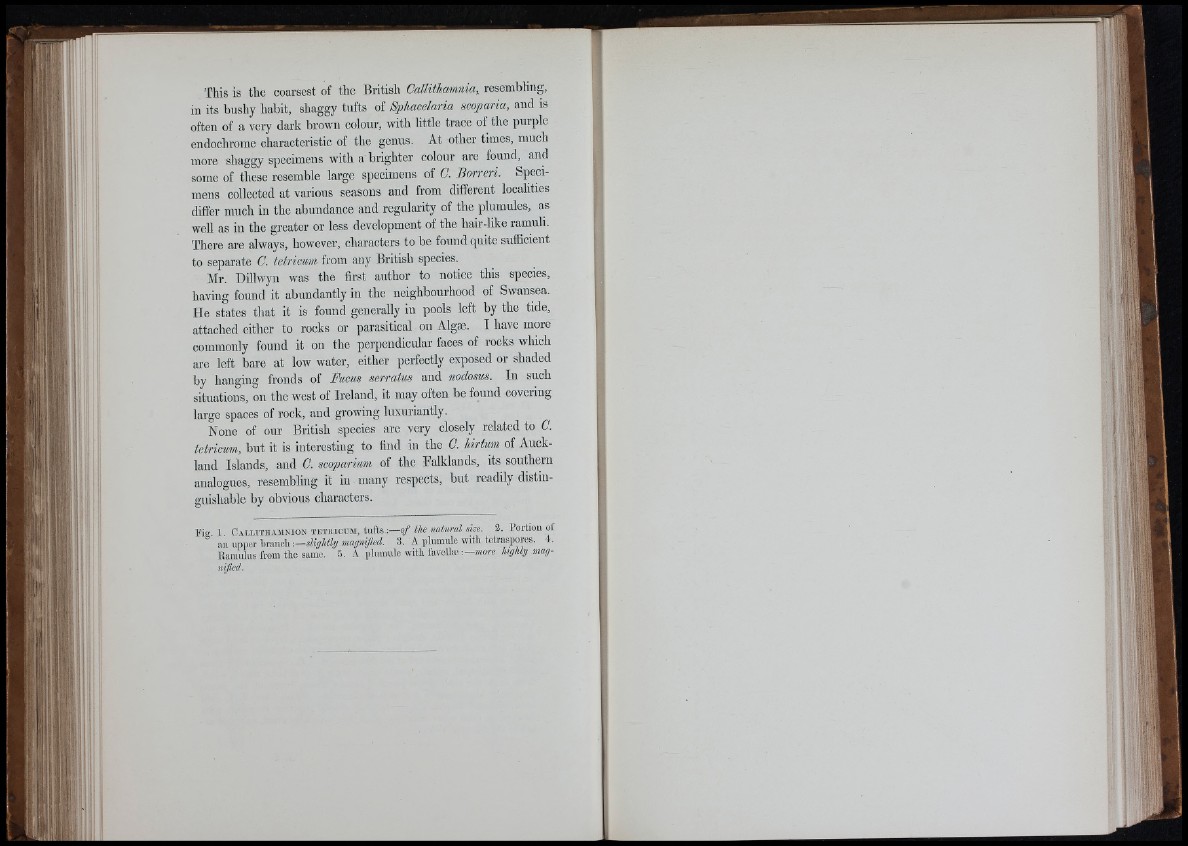
This is the coarsest of the British Callithamnia, resembling,
ill its bushy habit, shaggy tufts of Sphacelaria scoparia, and is
often of a very dark brown colour, with little trace of the purple
endochrome characteristic of the genus, At other times, much
more shaggy specimens with a brighter colour are found, and
some of these resemble large specimens of C. Borreri. Specimens
collected at various seasons and from different localities
differ much in the abundance and regularity of the plumules, as
well as in the greater or less development of the hair-like ramuh.
There are always, however, characters to be found quite sufficient
to separate C. tetricum from any British species.
Mr. Dillwyn was the first author to notice this species,
having found it abundantly in the neighbourhood of Swansea.
He states that it is found generally in pools left by the tide,
attached either to rocks or parasitical on Algae. I have more
commonly found it on the perpendicular faces of rocks which
are left bare at low water, either perfectly exposed or shaded
by hanging fronds of Bacus serratus and nodosus. In such
situations, on the west of Ireland, it may often be found covering
large spaces of rock, and growing luxuriantly.
None of our British species are very closely related to C.
tetricum, but it is interesting to find in the C. hirtum of Auckland
Islands, and C. scoparium of the Talklands, its southern
analogues, resembling it in many respects, but readily distinguishable
by obvious characters.
Fin- 1 C a l l i t h a m n i o n t k t r i c u m , tufts :— of the naiural size. 3, Portion ot
an upper brancli ■.— slightly magnified. 3. A plumule with tetraspores. 4.
Hamulus from the same. 5. A plumule with lavellæ ■.—more highly mag-
uifed.
i i i